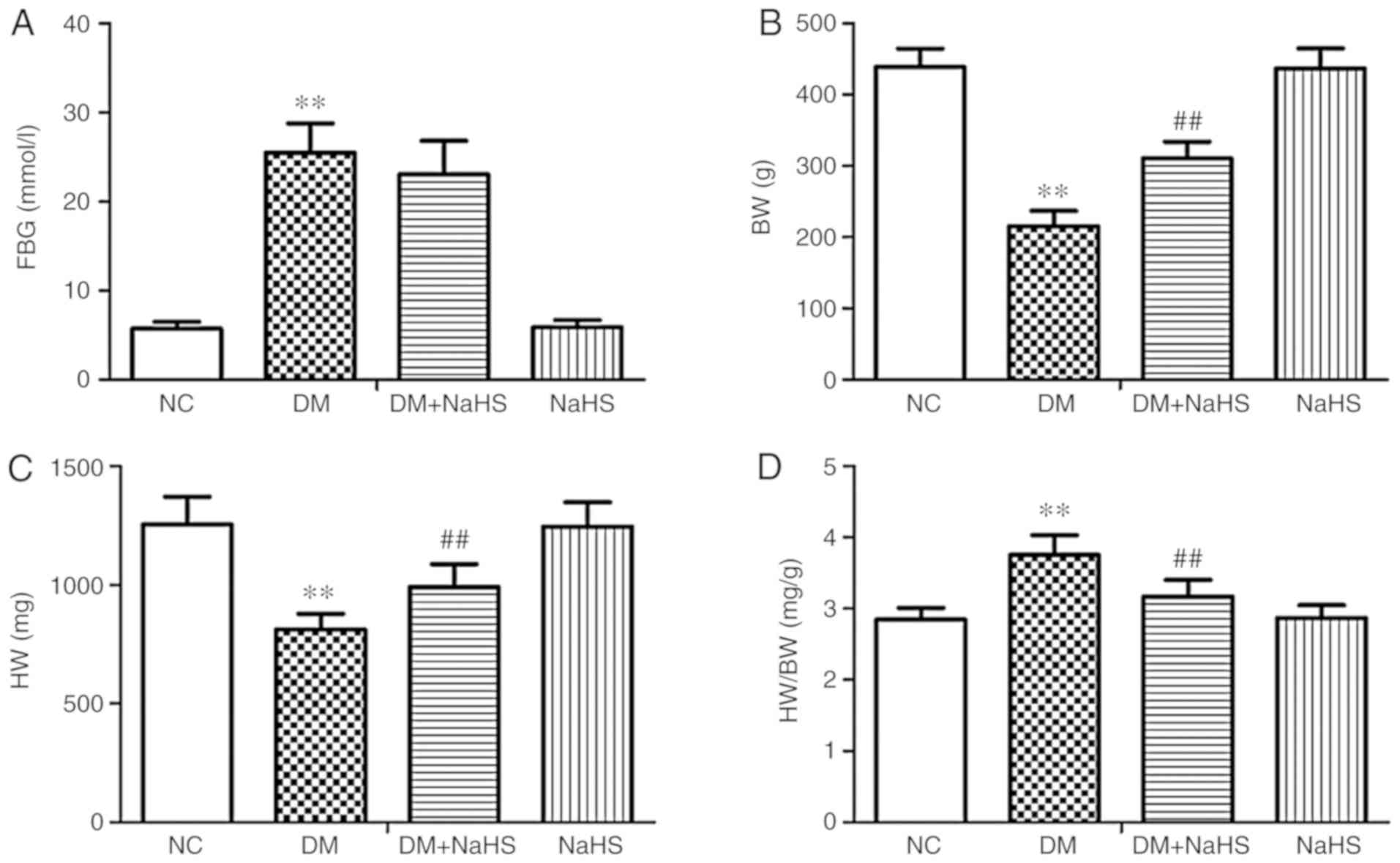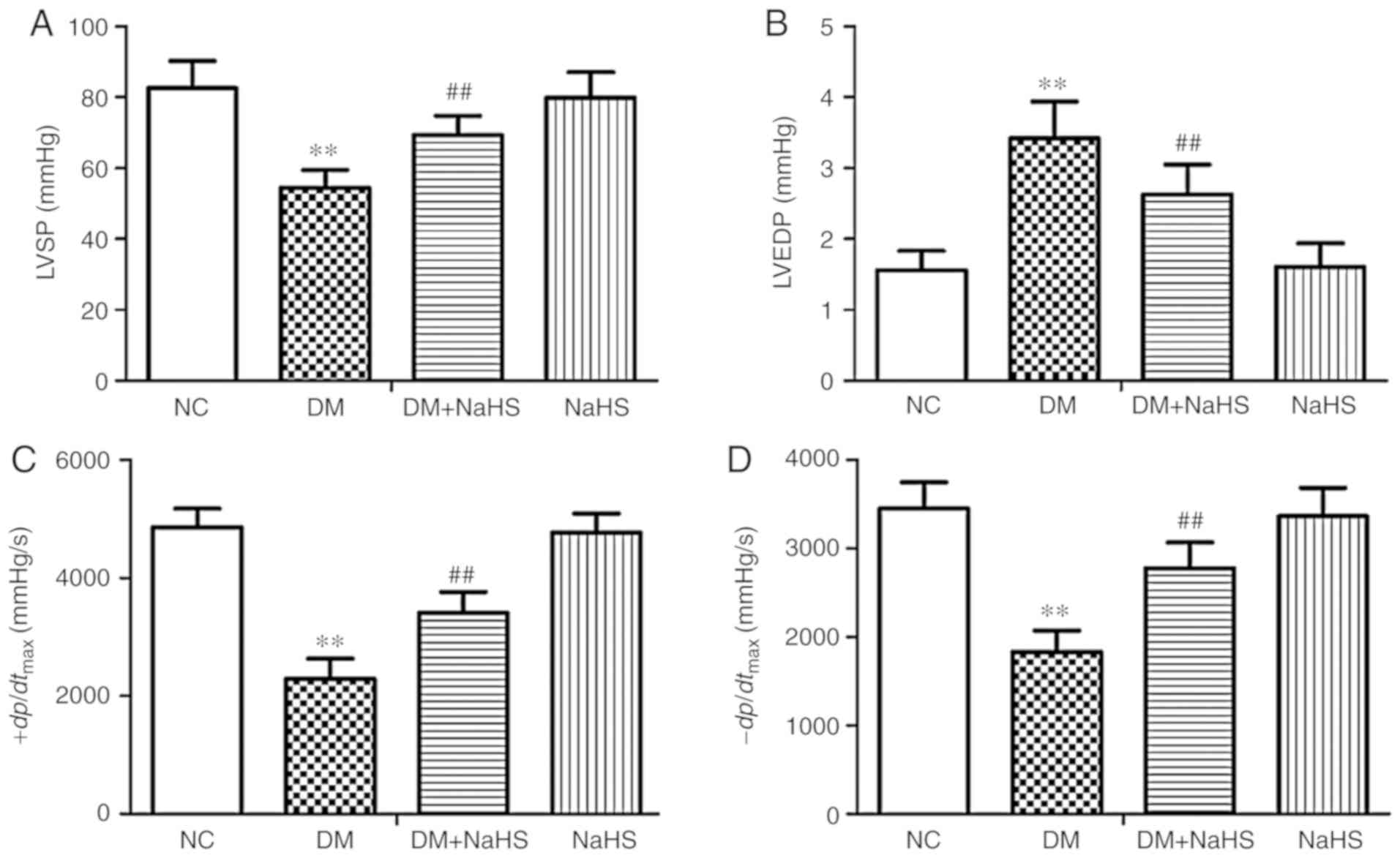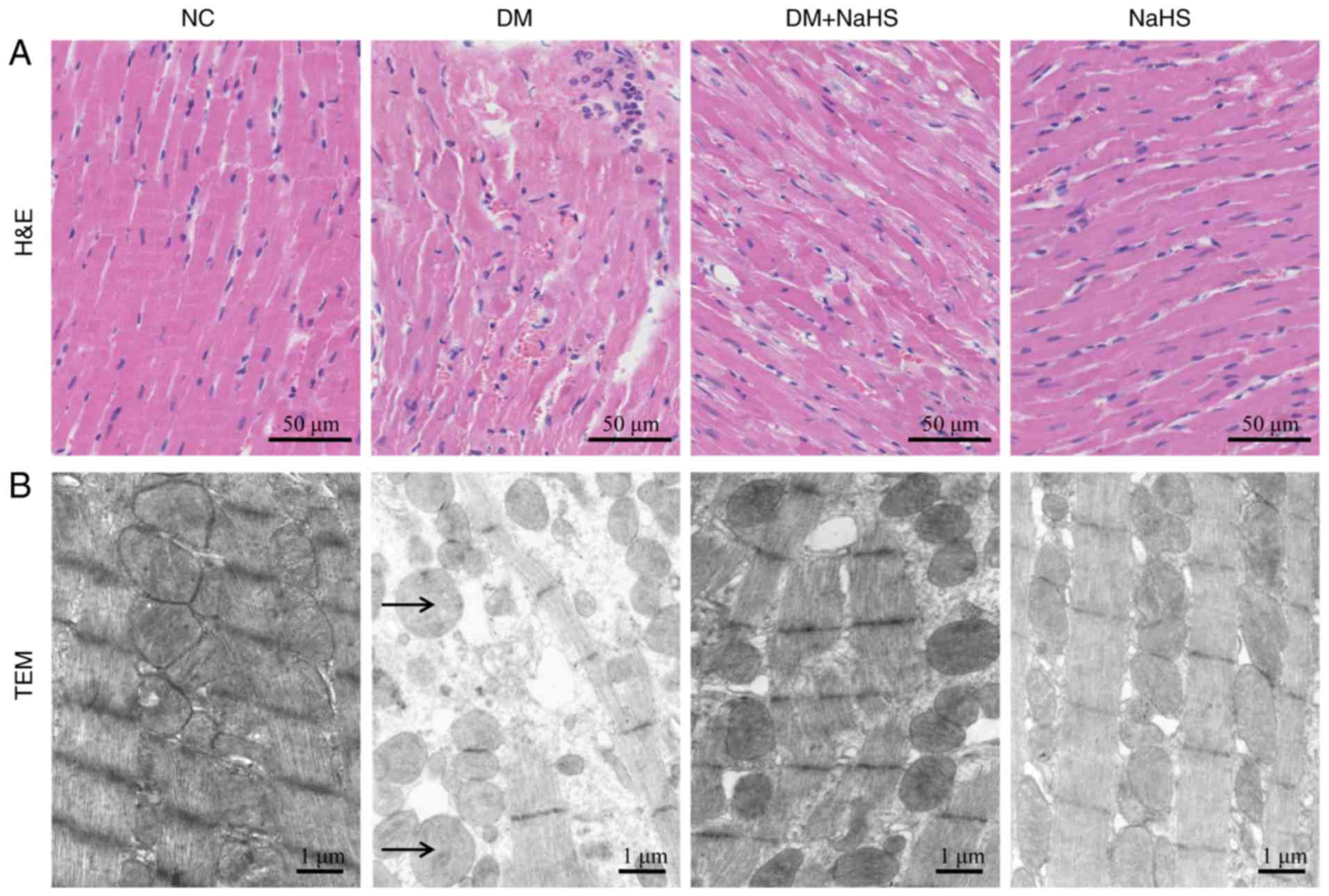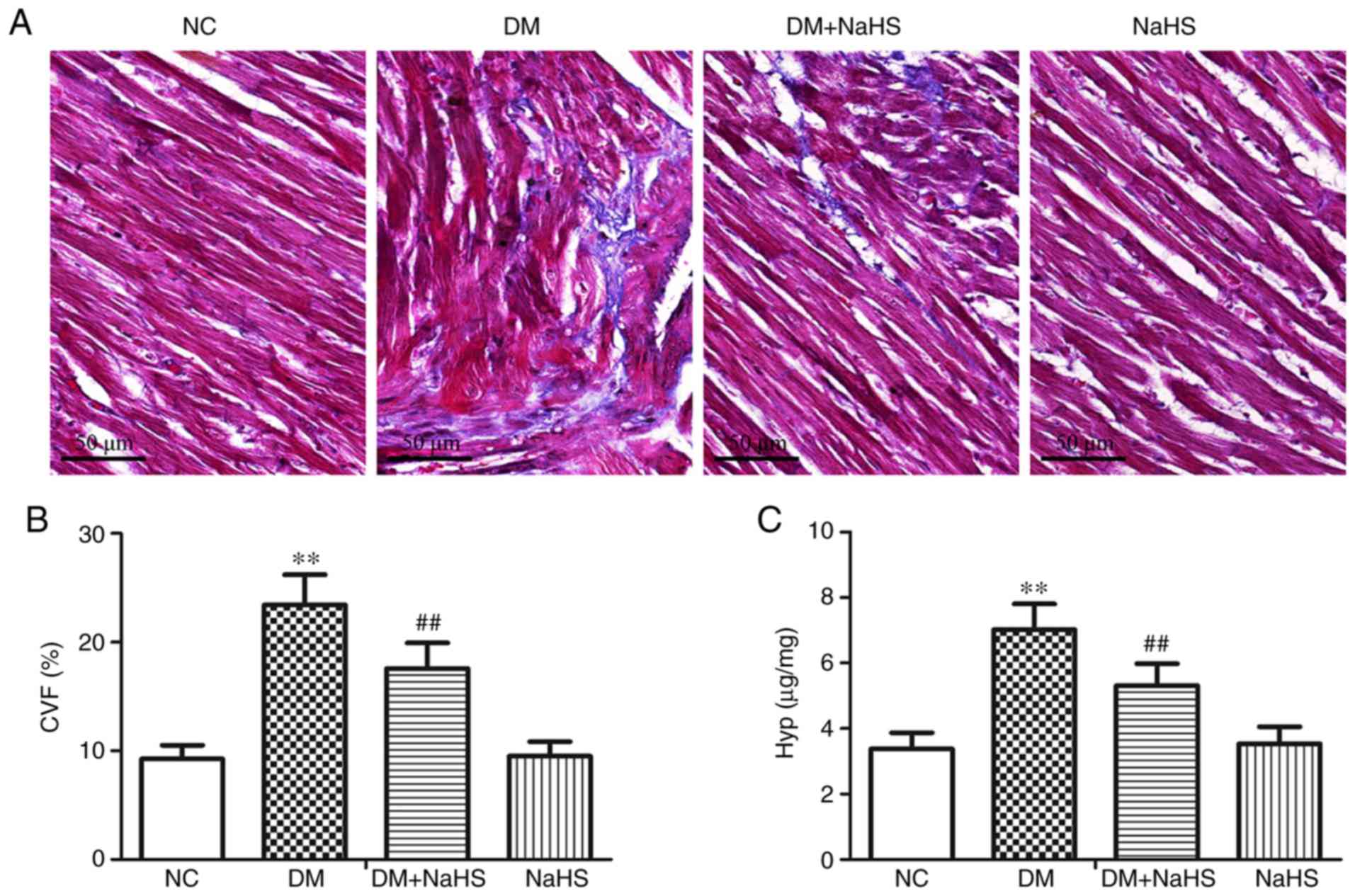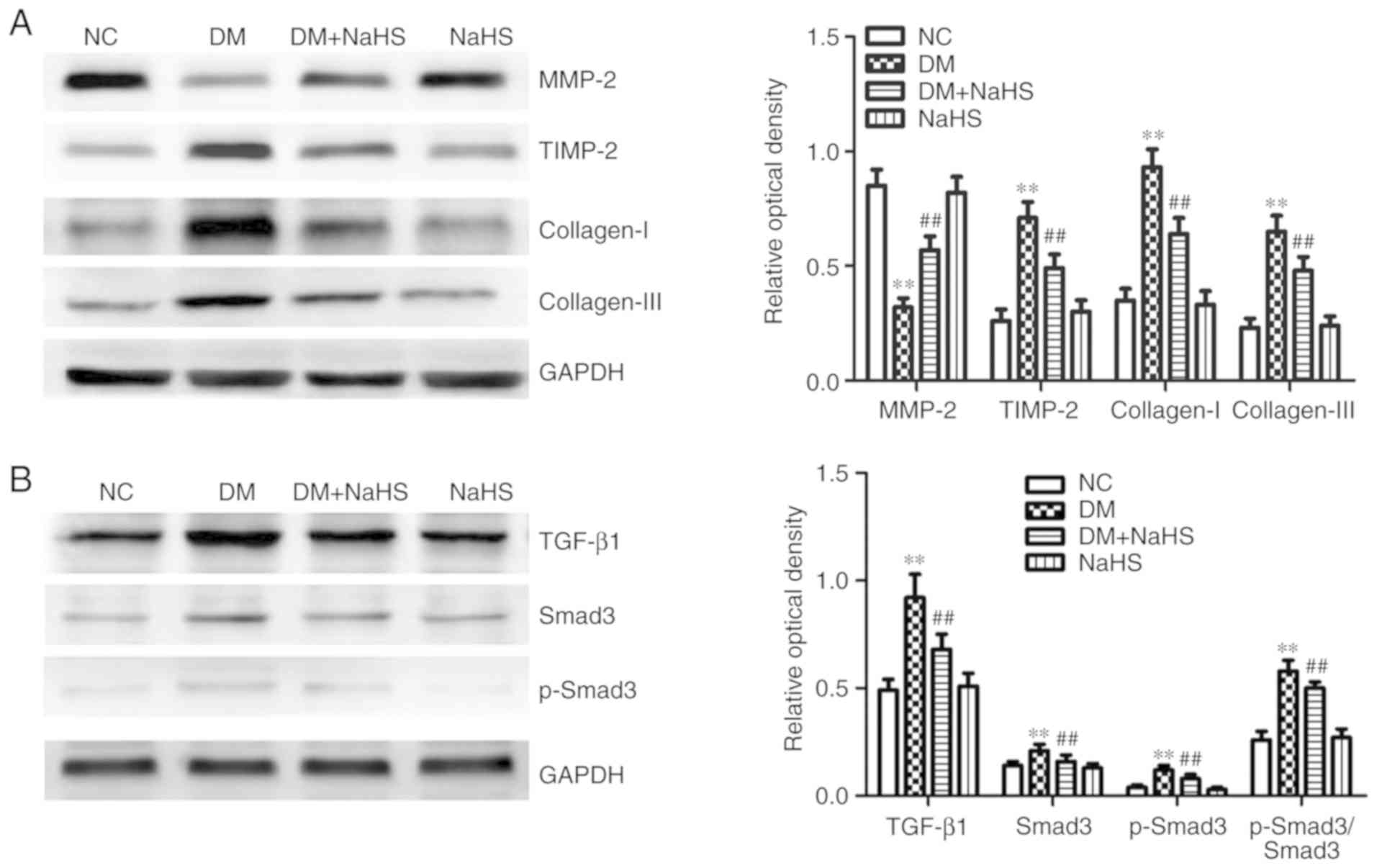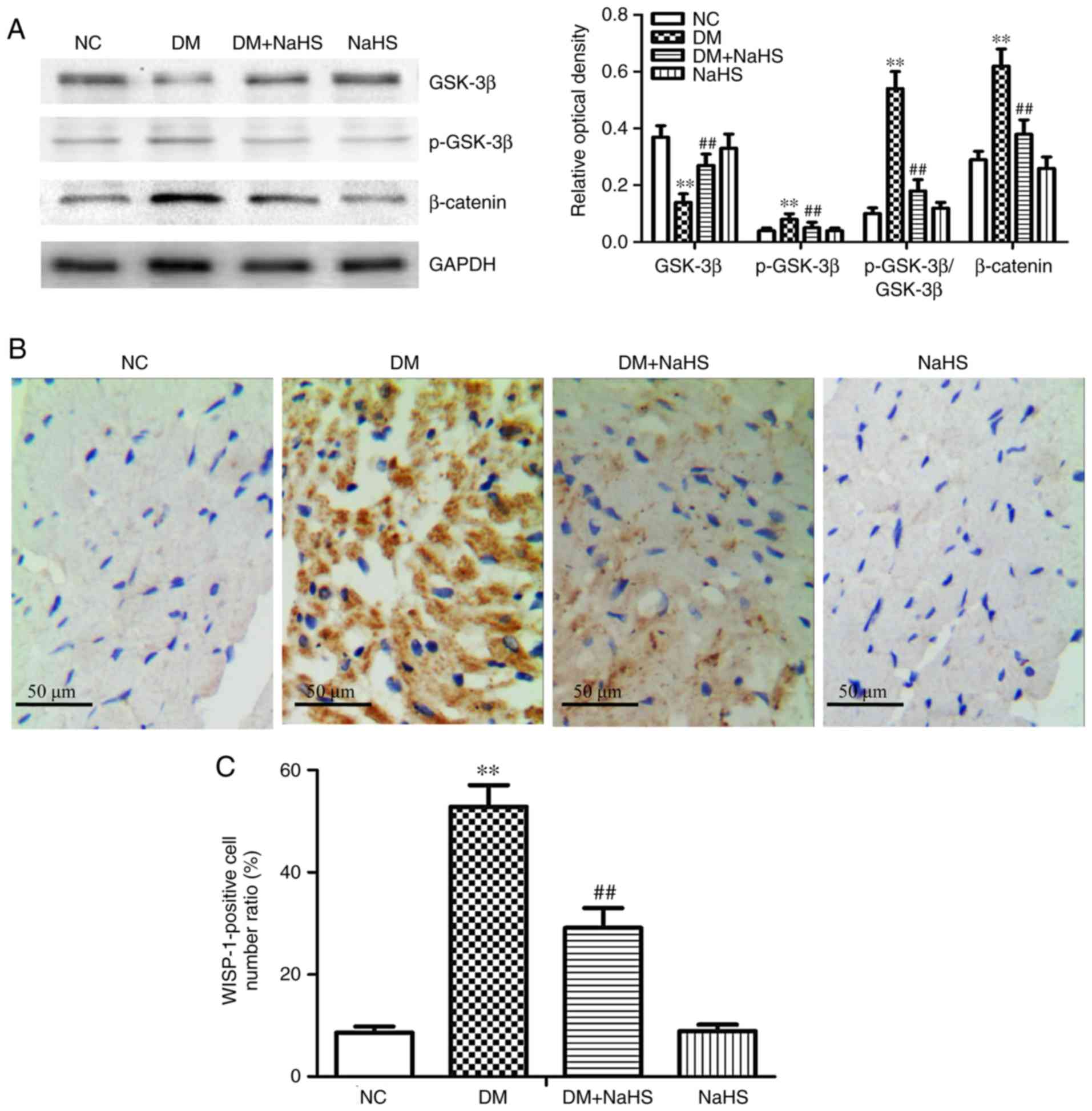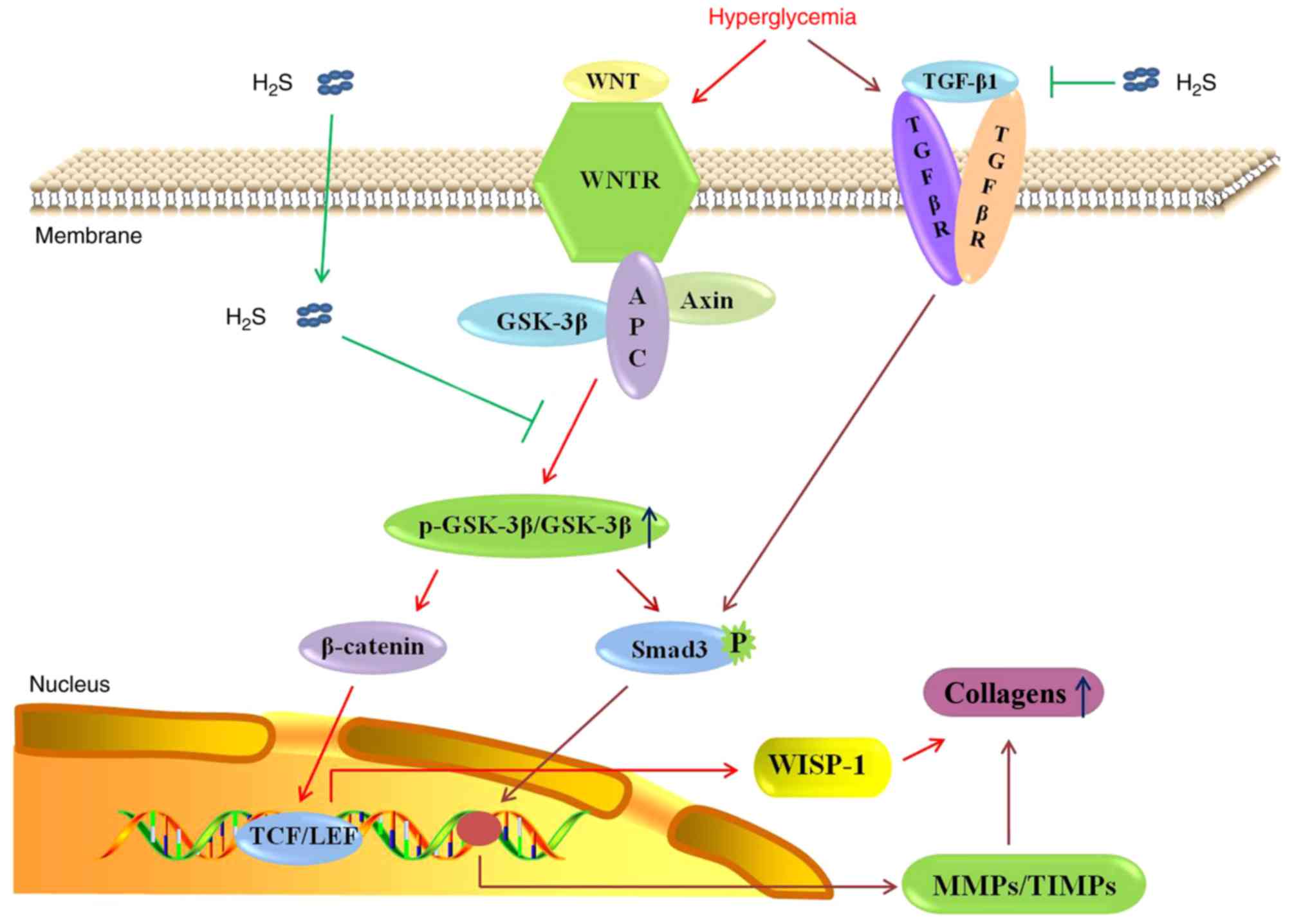|
1
|
Gilca GE, Stefanescu G, Badulescu O,
Tanase DM, Bararu I and Ciocoiu M: Diabetic cardiomyopathy: Current
approach and potential diagnostic and therapeutic targets. J
Diabetes Res. 2017:13102652017. View Article : Google Scholar : PubMed/NCBI
|
|
2
|
Zou C, Liu X, Xie R, Bao Y, Jin Q, Jia X,
Li L and Liu R: Deferiprone attenuates inflammation and myocardial
fibrosis in diabetic cardiomyopathy rats. Biochem Biophys Res
Commun. 486:930–936. 2017. View Article : Google Scholar : PubMed/NCBI
|
|
3
|
Moore-Morris T, Guimarães-Camboa N, Yutzey
KE, Pucéat M and Evans SM: Cardiac fibroblasts: From development to
heart failure. J Mol Med (Berl). 93:823–830. 2015. View Article : Google Scholar
|
|
4
|
Deb A and Ubil E: Cardiac fibroblast in
development and wound healing. J Mol Cell Cardiol. 70:47–55. 2014.
View Article : Google Scholar : PubMed/NCBI
|
|
5
|
Su SA, Yang D, Wu Y, Xie Y, Zhu W, Cai Z,
Shen J, Fu Z, Wang Y, Jia L, et al: EphrinB2 regulates cardiac
fibrosis through modulating the interaction of Stat3 and
TGF-β/Smad3 signaling. Circ Res. 121:617–627. 2017. View Article : Google Scholar : PubMed/NCBI
|
|
6
|
Han A, Lu Y, Zheng Q, Zhang J, Zhao Y,
Zhao M and Cui X: Qiliqiangxin attenuates cardiac remodeling via
inhibition of TGF-β1/Smad3 and NF-κB signaling pathways in a rat
model of myocardial infarction. Cell Physiol Biochem. 45:1797–1806.
2018. View Article : Google Scholar
|
|
7
|
Li X, Han D, Tian Z, Gao B, Fan M, Li C,
Li X, Wang Y, Ma S and Cao F: Activation of cannabinoid receptor
type II by AM1241 ameliorates myocardial fibrosis via Nrf2-mediated
inhibition of TGF-β1/Smad3 pathway in myocardial infarction mice.
Cell Physiol Biochem. 39:1521–1536. 2016. View Article : Google Scholar
|
|
8
|
Wang Y, Li YP, Paulson C, Shao JZ, Zhang
X, Wu M and Chen W: Wnt and the wnt signaling pathway in bone
development and disease. Front Biosci (Landmark Ed). 19:379–407.
2014. View Article : Google Scholar
|
|
9
|
Kim W, Kim M and Jho EH: Wnt/β-catenin
signalling: From plasma membrane to nucleus. Biochem J. 450:9–21.
2013. View Article : Google Scholar : PubMed/NCBI
|
|
10
|
Angers S and Moon RT: Proximal events in
wnt signal transduction. Nat Rev Mol Cell Biol. 10:468–477. 2009.
View Article : Google Scholar : PubMed/NCBI
|
|
11
|
Tao H, Yang JJ, Shi KH and Li J: Wnt
signaling pathway in cardiac fibrosis: New insights and directions.
Metabolism. 65:30–40. 2016. View Article : Google Scholar : PubMed/NCBI
|
|
12
|
Xu L, Corcoran RB, Welsh JW, Pennica D and
Levine AJ: WISP-1 is a wnt-1- and beta-catenin-responsive oncogene.
Genes Dev. 14:585–595. 2000.PubMed/NCBI
|
|
13
|
Colston JT, de la Rosa SD, Koehler M,
Gonzales K, Mestril R, Freeman GL, Bailey SR and Chandrasekar B:
Wnt-induced secreted protein-1 is a prohypertrophic and profibrotic
growth factor. Am J Physiol Heart Circ Physiol. 293:H1839–H1846.
2007. View Article : Google Scholar : PubMed/NCBI
|
|
14
|
Działo E, Tkacz K and Błyszczuk P:
Crosstalk between the TGF-β and WNT signalling pathways during
cardiac fibro-genesis. Acta Biochim Pol. 65:341–349. 2018.
View Article : Google Scholar
|
|
15
|
Blyszczuk P, Müller-Edenborn B, Valenta T,
Osto E, Stellato M, Behnke S, Glatz K, Basler K, Lüscher TF,
Distler O, et al: Transforming growth factor-β-dependent wnt
secretion controls myofibroblast formation and myocardial fibrosis
progression in experimental autoimmune myocarditis. Eur Heart J.
38:1413–1425. 2017.
|
|
16
|
Lal H, Ahmad F, Zhou J, Yu JE, Vagnozzi
RJ, Guo Y, Yu D, Tsai EJ, Woodgett J, Gao E and Force T: Cardiac
fibroblast glycogen synthase kinase-3β regulates ventricular
remodeling and dysfunction in ischemic heart. Circulation.
130:419–430. 2014. View Article : Google Scholar : PubMed/NCBI
|
|
17
|
Beltowski J: Hydrogen sulfide in
pharmacology and medicine-an update. Pharmacol Rep. 67:647–658.
2015. View Article : Google Scholar
|
|
18
|
Salloum FN: Hydrogen sulfide and
cardioprotection-mechanistic insights and clinical translatability.
Pharmacol Ther. 152:11–17. 2015. View Article : Google Scholar : PubMed/NCBI
|
|
19
|
Su YW, Liang C, Jin HF, Tang XY, Han W,
Chai LJ, Zhang CY, Geng B, Tang CS and Du JB: Hydrogen sulfide
regulates cardiac function and structure in adriamycin-induced
cardiomyopathy. Circ J. 73:741–749. 2009. View Article : Google Scholar : PubMed/NCBI
|
|
20
|
Sun L, Jin H, Chen S, Sun L, Huang Y, Liu
J, Li Z, Zhao M, Sun Y, Tang C, et al: Hydrogen sulfide alleviates
myocardial collagen remodeling in association with inhibition of
TGF-β/Smad signaling pathway in spontaneously hypertensive rats.
Mol Med. 20:503–515. 2015. View Article : Google Scholar :
|
|
21
|
Yang R, Jia Q, Liu XF, Wang YY and Ma SF:
Effects of hydrogen sulfide on inducible nitric oxide synthase
activity and expression of cardiomyocytes in diabetic rats. Mol Med
Rep. 16:5277–5284. 2017. View Article : Google Scholar : PubMed/NCBI
|
|
22
|
Jia Q, Yang R, Liu XF, Wang QY, Lu HY and
Ma SF: Sodium hydrosulfide attenuates myocardial injury through
activating thioredoxin system in diabetic rats. Xi Bao Yu Fen Zi
Mian Yi Xue Za Zhi. 33:1385–1391. 2017.In Chinese. PubMed/NCBI
|
|
23
|
Jia Q, Yang R, Liu XF, Ma SF and Wang L:
Genistein attenuates renal fibrosis in streptozotocin-induced
diabetic rats. Mol Med Rep. 19:423–431. 2019.
|
|
24
|
Ward ML and Crossman DJ: Mechanisms
underlying the impaired contractility of diabetic cardiomyopathy.
World J Cardiol. 6:577–584. 2014. View Article : Google Scholar : PubMed/NCBI
|
|
25
|
Miki T, Yuda S, Kouzu H and Miura T:
Diabetic cardiomyopathy: Pathophysiology and clinical features.
Heart Fail Rev. 18:149–166. 2013. View Article : Google Scholar :
|
|
26
|
Yang R, Jia Q, Liu XF and Ma SF: Effect of
genistein on myocardial fibrosis in diabetic rats and its
mechanism. Mol Med Rep. 17:2929–2936. 2018.
|
|
27
|
Powell CR, Dillon KM and Matson JB: A
review of hydrogen sulfide (H2S) donors: Chemistry and
potential therapeutic applications. Biochem Pharmacol. 149:110–123.
2018. View Article : Google Scholar
|
|
28
|
Qian LL, Liu XY, Chai Q and Wang RX:
Hydrogen sulfide in diabetic complications: Focus on molecular
mechanisms. Endocr Metab Immune Disord Drug Targets. 18:470–476.
2018. View Article : Google Scholar : PubMed/NCBI
|
|
29
|
Calvert JW, Coetzee WA and Lefer DJ: Novel
insights into hydrogen sulfide-mediated cytoprotection. Antioxid
Redox Signal. 12:1203–1217. 2010. View Article : Google Scholar :
|
|
30
|
Citi V, Piragine E, Testai L, Breschi MC,
Calderone V and Martelli A: The role of hydrogen sulfide and
H2S-donors in myocardial protection against ischemia/reperfusion
injury. Curr Med Chem. 25:4380–4401. 2018. View Article : Google Scholar : PubMed/NCBI
|
|
31
|
Liu YH, Lu M, Xie ZZ, Hua F, Xie L, Gao
JH, Koh YH and Bian JS: Hydrogen sulfide prevents heart failure
development via inhibition of renin release from mast cells in
isoproterenol-treated rats. Antioxid Redox Signal. 20:759–769.
2014. View Article : Google Scholar
|
|
32
|
Zhou X, An G and Lu X: Hydrogen sulfide
attenuates the development of diabetic cardiomyopathy. Clin Sci
(Lond). 128:325–335. 2015. View Article : Google Scholar
|
|
33
|
Liu M, Li Y, Liang B, Li Z, Jiang Z, Chu C
and Yang J: Hydrogen sulfide attenuates myocardial fibrosis in
diabetic rats through the JAK/STAT signaling pathway. Int J Mol
Med. 41:1867–1876. 2018.PubMed/NCBI
|
|
34
|
Pistocchi A, Fazio G, Cereda A, Ferrari L,
Bettini LR, Messina G, Cotelli F, Biondi A, Selicorni A and Massa
V: Cornelia de lange syndrome: NIPBL haploinsufficiency
downregulates canonical Wnt pathway in zebrafish embryos and
patients fibroblasts. Cell Death Dis. 4:e8662013. View Article : Google Scholar : PubMed/NCBI
|
|
35
|
Demunter A, Libbrecht L, Degreef H, De
Wolf-Peeters C and van den Oord JJ: Loss of membranous expression
of beta-catenin is associated with tumor progression in cutaneous
melanoma and rarely caused by exon 3 mutations. Mod Pathol.
15:454–461. 2002. View Article : Google Scholar : PubMed/NCBI
|
|
36
|
Shi J, Li F, Luo M, Wei J and Liu X:
Distinct roles of Wnt/β-catenin signaling in the pathogenesis of
chronic obstructive pulmonary disease and idiopathic pulmonary
fibrosis. Mediators Inflamm. 2017:35205812017. View Article : Google Scholar
|
|
37
|
Zhao X, Hua Y, Chen H, Yang H, Zhang T,
Huang G, Fan H, Tan Z, Huang X, Liu B and Zhou Y: Aldehyde
dehydrogenase-2 protects against myocardial infarction-related
cardiac fibrosis through modulation of the Wnt/β-catenin signaling
pathway. Ther Clin Risk Manag. 11:1371–1381. 2015. View Article : Google Scholar :
|
|
38
|
Ji XK, Xie YK, Zhong JQ, Xu QG, Zeng QQ,
Wang Y, Zhang QY and Shan YF: GSK-3β suppresses the proliferation
of rat hepatic oval cells through modulating Wnt/β-catenin
signaling pathway. Acta Pharmacol Sin. 36:334–342. 2015. View Article : Google Scholar : PubMed/NCBI
|
|
39
|
Bergmann C, Akhmetshina A, Dees C, Palumbo
K, Zerr P, Beyer C, Zwerina J, Distler O, Schett G and Distler JH:
Inhibition of glycogen synthase kinase 3β induces dermal fibrosis
by activation of the canonical Wnt pathway. Ann Rheum Dis.
70:2191–2198. 2011. View Article : Google Scholar : PubMed/NCBI
|
|
40
|
Chattopadhyay M, Nath N, Kodela R, Sobocki
T, Metkar S, Gan ZY and Kashfi K: Hydrogen sulfide-releasing
aspirin inhibits the growth of leukemic Jurkat cells and modulates
β-catenin expression. Leuk Res. 37:1302–1308. 2013. View Article : Google Scholar : PubMed/NCBI
|
|
41
|
Liu C, Xu X, Gao J, Zhang T and Yang Z:
Hydrogen sulfide prevents synaptic plasticity from VD-induced
damage via Akt/GSK-3β pathway and notch signaling pathway in rats.
Mol Neurobiol. 53:4159–4172. 2016. View Article : Google Scholar
|
|
42
|
Qu Y, Zhang L, Kang Z, Jiang W and Lv C:
Ponatinib ameliorates pulmonary fibrosis by suppressing
TGF-β1/Smad3 pathway. Pulm Pharmacol Ther. 34:1–7. 2015. View Article : Google Scholar : PubMed/NCBI
|
|
43
|
Jin Z, Gu C, Tian F, Jia Z and Yang J:
NDRG2 knockdown promotes fibrosis in renal tubular epithelial cells
through TGF-β1/Smad3 pathway. Cell Tissue Res. 369:603–610. 2017.
View Article : Google Scholar : PubMed/NCBI
|
|
44
|
Hasan IH, El-Desouky MA, Hozayen WG and
Abd el Aziz GM: Protective effect of zingiber officinale against
CCl4-induced liver fibrosis is mediated through downregulating the
TGF-β1/Smad3 and NF-kB/IkB pathways. Pharmacology. 97:1–9. 2016.
View Article : Google Scholar
|
|
45
|
Wang XT, Gong Y, Zhou B, Yang JJ, Cheng Y,
Zhao JG and Qi MY: Ursolic acid ameliorates oxidative stress,
inflammation and fibrosis in diabetic cardiomyopathy rats. Biomed
Pharmacother. 97:1461–1467. 2018. View Article : Google Scholar
|
|
46
|
Westermann D, Rutschow S, Jager S,
Linderer A, Anker S, Riad A, Unger T, Schultheiss HP, Pauschinger M
and Tschöpe C: Contributions of inflammation and cardiac matrix
metalloproteinase activity to cardiac failure in diabetic
cardiomyopathy: The role of angiotensin type 1 receptor antagonism.
Diabetes. 56:641–646. 2007. View Article : Google Scholar : PubMed/NCBI
|
|
47
|
Dong B, Yu QT, Dai HY, Gao YY, Zhou ZL,
Zhang L, Jiang H, Gao F, Li SY, Zhang YH, et al:
Angiotensin-converting enzyme-2 overexpression improves left
ventricular remodeling and function in a rat model of diabetic
cardiomyopathy. J Am Coll Cardiol. 59:739–747. 2012. View Article : Google Scholar : PubMed/NCBI
|
|
48
|
Xiao T, Zeng O, Luo J, Wu Z, Li F and Yang
J: Effects of hydrogen sulfide on myocardial fibrosis in diabetic
rats: Changes in matrix metalloproteinases parameters. Biomed Mater
Eng. 26(Suppl 1): S2033–S2039. 2015.PubMed/NCBI
|
|
49
|
Li CJ, Lv L, Li H and Yu DM: Cardiac
fibrosis and dysfunction in experimental diabetic cardiomyopathy
are ameliorated by alpha-lipoic acid. Cardiovasc Diabetol.
11:732012. View Article : Google Scholar : PubMed/NCBI
|
|
50
|
Guo Y, Gupte M, Umbarkar P, Singh AP, Sui
JY, Force T and Lal H: Entanglement of GSK-3β, β-catenin and TGF-β1
signaling network to regulate myocardial fibrosis. J Mol Cell
Cardiol. 110:109–120. 2017. View Article : Google Scholar : PubMed/NCBI
|
|
51
|
Guo X, Ramirez A, Waddell DS, Li Z, Liu X
and Wang XF: Axin and GSK3-control Smad3 protein stability and
modulate TGF-signaling. Genes Dev. 22:106–120. 2008. View Article : Google Scholar : PubMed/NCBI
|



